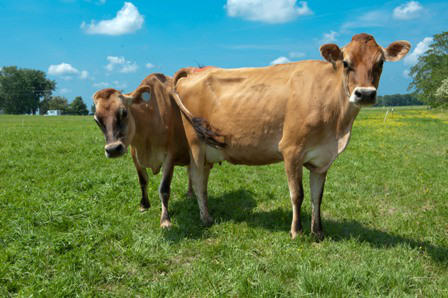
How Maine’s Vast Pastureland Can Help Farmers Grow Revenue
Maine is seeing a surge in small farms, with more than 1,000 farms added in the last 10 years, according to the 2012 Census of Agriculture.
A majority of this growth has come from small-diversified vegetable farms that are marketing directly to consumers through farmers markets, farm stands and Community Supported Agriculture (CSAs).
This growth has propelled Maine into the No. 2 ranking in the U.S. by Strolling Through the Heifers, a Vermont-based local food advocacy group that puts out a locavore index ranking states by their commitment to local foods.
March 19, 2015 | Source: BDN Maine | by Rick Kersbergen
Maine is seeing a surge in small farms, with more than 1,000 farms added in the last 10 years, according to the 2012 Census of Agriculture.
A majority of this growth has come from small-diversified vegetable farms that are marketing directly to consumers through farmers markets, farm stands and Community Supported Agriculture (CSAs).
This growth has propelled Maine into the No. 2 ranking in the U.S. by Strolling Through the Heifers, a Vermont-based local food advocacy group that puts out a locavore index ranking states by their commitment to local foods.
But there is a way for Maine to increase farm revenues and viability even more by tapping into an underutilized resource: grass. Maine has a huge amount of grass pastures and hayfields that can produce quality milk and meat at a low cost.
While vegetable farmers need high-quality soils to grow high-value crops, grass and legume pastures can produce feed for livestock on more marginal lands, thus opening up the potential to grow Maine’s livestock industry.
Additionally, the benefit of integrating livestock with other enterprises such as crop production provides a multitude of benefits to farms, soils and farm profits. Grass-based livestock production can also help to preserve open space along with providing other environmental benefits.
The Maine Grass Farmers Network is a farmer-led organization that is holding its annual conference this Saturday, March 21, at Kennebec Valley Community College in Fairfield. This 10th annual conference is featuring a variety of speakers and national experts discussing grass-fed livestock production.
The keynote speaker, Gabe Brown, was recently featured in the science section of the New York Times for his sustainable farm practices that include livestock production and improved grazing management techniques.
So why is Maine positioned to be a leader in grass-based livestock production? Maine has a substantial amount of acreage that is underutilized that could potentially produce high-quality forage (grass) for beef and lamb production.
From abandoned hayfields in southern and central Maine, to idle and rotated potato ground in Aroostook County, there is untapped potential. Our climate is ideal for growing cool season forages due to our moderate temperatures and our increasingly valuable rainfall.
When properly managed, grass and legume fields can produce high-quality feed for grazing as well as for stored feed for winter consumption. Grazing animals can be on pasture for six months of the year, with minimal purchased inputs.
